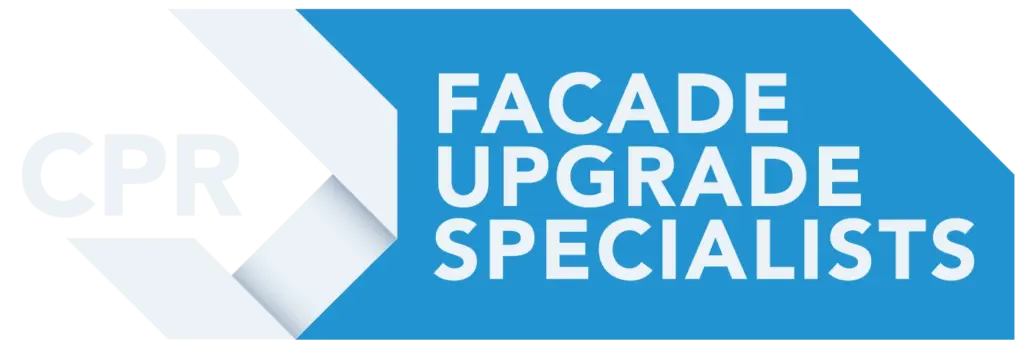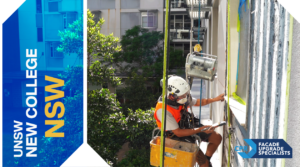Painting high-rise buildings isn’t just about adding colour to the skyline — painting high rise buildings is a specialised discipline that demands advanced planning and compliance with strict safety measures. When it comes to painting at height, only trained and certified high rise painting contractors can guarantee both compliance and quality.
Choosing Professional High-Rise Painting Services and Equipment
High-rise painting is not just another job — it requires specialised skills, planning, and certified high rise building painting equipment. Hiring professional high rise painters ensures your project is handled safely. Look for experienced high rise painting contractors in high rise painting Sydney trained in painting at height and rescue procedures.
Among all regions, high rise painting Sydney stands out for its demanding coastal climate, requiring UV-stable paints and corrosion-resistant materials
The Role of Painting in Construction and Tower Safety Standards
Painting in construction protects both appearance and safety. Strict tower painting safety standards regulate PPE use, chemical handling, and fall-arrest systems. At CPR, our Scaffold-Free™ systems (MARS™, PEARS®, SkyPod®) enable safety-compliant tower painting, which means for you cost savings, faster timelines, and safer delivery of high-rise painting projects.
How to Paint Tall Buildings: Equipment, Expertise, and Best Practices
Learning how to paint tall buildings safely requires advanced planning, certified equipment, and professional high rise painting contractors. From encapsulated workstations to protective netting, every step must include painting work safety precautions. For clients, choosing a provider experienced in high access painting and residential building paintwork best practice ensures long-term durability and compliance.
Proper building facade painting ensures not only aesthetic appeal but also long-term protection against weathering and corrosion.
Understanding the Risks of High-Rise Painting
When it comes to painting high-rise structures, the stakes are inherently higher due to the elevated working conditions.
Whether in high rise painting Darwin, high rise painting Adelaide, or high-rise painting Randwick, local environments demand environmental compliant tower painting methods to minimise ecological impact and meet regulatory standards.
For instance, high rise painters Randwick must follow heritage compliance and use approved conservation-grade coatings
- Falls from Height
Falling is considered to be the greatest hazard in working at height in high rise painting operations. Workers are positioned at great heights, and if they do not have suitable safety gear such as ropes or guardrails there is the increased danger of a fall. Among these falls are those that can cause severe injuries, even death, so fall protection measures are indeed relevant.
- Equipment Failure
High-rise painting equipment like scaffolding, lifts, and ladders are subject to the same condition as other equipment. These could fail which may result in accidents, such as falls and stuffs that are falling towards oneself. The regular inspection and repair of machines are of utmost importance in order to prevent failures in functioning.
- Weather Conditions
The external jobs are at the mercy of the weather. Strong gusts of wind create difficulties with stabilizing scaffold and the work process with spraying equipment becomes more complicated. Rain makes surfaces slippery and postpones work. Extreme temperature also pose health risks to workers and change the paint application rate or vehicles chemical that can be hazardous to health if proper precautions are not taken.
- Chemical Hazards
Paints and solvents, consisting of volatile organic compounds (VOCs) and others, create as wastes. The respiratory problems and skin issues might occur due to inhaling the fumes or direct contact with these chemicals. Also, other health problems might happen. The essentials aren’t only PPE but also the ventilation system must be adequate to reduce the risk.
- Electrical Hazards
The closeness to electric devices, as power lines, and the use of electric appliances, may lead to the death caused by electric shock. Safeguarding of the equipment through proper grounding, and educating workers on the hazard is mandatory.
Choosing Professional High-Rise Painting Services and Equipment
High-rise painting is not just another “painting a building” job; it requires specialised skills, equipment, and planning. Hiring professional painters for skyscrapers or experienced high rise painting contractors ensures your project is handled safely and efficiently. Look for teams equipped with certified harnesses, lifelines, and high rise building painting equipment that meet all safety standards. Leading high rise painters also provide safety equipment for high-rise work and are trained in rescue techniques. Whether your needs involve high access painting, building external painting, or high rise building exterior painting, select a contractor with a proven track record in safety and quality.
Experienced high rise painters are trained in rope access, lift operation, and emergency rescue procedures
7 Important Safety Protocols for Painting High-Rise Structures
Ensuring safety during high rise painting services involves daily inspections, equipment maintenance, and adherence to national safety standards, certified high rise painters follow best practices to prevent accidents and ensure compliance across all tall building painting projects.
- Comprehensive Safety Training
As the first step, it is essential that all personnel are trained in security issues in a detailed manner before they begin to work. This training should cover the use of the SMART SPIDER POWER ASCENDER PRO for secure vertical movement, PPE wearing, evacuation procedures, and scaffolding and lift usage. Employees should be informed of the ways to control the risks particular to high-rise painting.
- Regular Equipment Checks
All the equipment including the scaffolding, ladders, harnesses, and lifting equipment need to be inspected in order to detect any visible wear and tear. Maintenance of equipment in good working state eliminates the chances related to equipment failure accidents.
- Use of Personal Protective Equipment (PPE)
Employees should don the proper PPE at all times. This may include hard hats, safety harnesses, gloves, goggles, and respirators. This equipment is definitely essential in keeping workers from slipping, falling, or any other possible dangers.
- Adherence to Weather Guidelines
Building Painting should be achieved only when the weather conditions are proper. Projects should be temporarily halted in high winds, rain or harsh weather conditions in order to prevent workers from injuries and maintain the quality of the painting process.
- Secure Work Areas
This will necessitate the making of these work areas secure, and also providing clear identifiers to avoid casualties and also assure public safety from falling debris. This will be attained by netting, barricading and signage on the ground to caution those that pass by from the work happening above.
- Emergency Preparedness
Emergency procedures need to be developed and be communicated to everyone on the team force. Such measures include developing a strategy for running a rescue procedure in the case of a fall or a faulty equipment, and having the first aid close at hand on the site.
- Environmental and Health Precautions
Measures should be implemented during the painting process that are aimed at reducing the environmental load and safeguarding the health of the employees. Environmental protective measures will be taken here by using green paints if possible, adequate and regular ventilation to control fumes and doing regular health check-ups for workers.
Developing a Safety-Compliant Work Method Statement for High-Rise Painting
A detailed painting safe work method statement is essential for operations at height. This document outlines hazards, tower painting safety standards, PPE requirements, and emergency plans for safety-compliant tower painting. Clients should always request to see their contractor’s safe work method statement painting to confirm procedures for painting at height and external painting work are in place.
Regional and Residential Best Practices for Elevated Structure Painting
Different regions present unique challenges for elevated structure painting, from moisture resistance in tropical climates to wind exposure along coastal façades, while high-rise painting Randwick demands heritage compliance. For residential building paintwork best practice, combine high rise exterior building repairs with painting to maximise durability and efficiency.
The Role of Painting in Construction and Tower Safety Standards
Painting in construction isn’t only about appearance — it’s a core part of protecting assets and ensuring safety at height. On tall structures, every layer of paint must withstand wind, weather, and environmental exposure for decades. That’s why tower painting safety standards have become so critical. These standards regulate everything from harness certification to chemical handling, ensuring workers and residents remain safe throughout the project.
When it comes to safety-compliant tower painting, experienced contractors implement strict protocols before setting foot on a work platform. This includes writing detailed work method statements, carrying out daily safety briefings, and using certified fall-arrest systems. At CPR, our Scaffold-Free™ access systems such as MARS™, PEARS®, and SkyPod® go further by minimising disruption and eliminating the bulk of scaffolding risks — which means for you, fewer delays, lower costs, and confidence that the job complies with the highest safety standards.
How to Paint Tall Buildings: Equipment, Expertise, and Best Practices
If you’ve ever wondered how to paint tall buildings, the answer lies in specialised planning, high rise building painting equipment, and skilled teams trained for painting at height. Traditional scaffolding can be slow, noisy, and intrusive. Instead, innovative systems like our SkyPod® Building Remedial Workstations allow painters to operate safely and efficiently outside the building envelope, without interrupting residents or tenants.
Painting skyscrapers or completing a full high rise building exterior painting project requires more than just brushes and rollers. Certified access equipment, encapsulated workstations, and protective netting are vital to control debris and safeguard the public below. Contractors must also integrate painting work safety precautions — from weather monitoring to chemical ventilation — into every stage of the project.
For clients, this means selecting a partner with a proven track record in highrise painting and residential building paintwork best practice. CPR’s Scaffold-Free™ approach ensures precise application, long-term durability, and compliance with all regulations — which means for you, a safer, faster, and more cost-effective transformation of your building.
High Rise Painting Adelaide, Darwin, and Randwick: Regional Best Practices
Different regions present unique challenges for high rise painting:
- High rise painting Adelaide: strong winds and coastal exposure demand weather-resistant coatings.
- High rise painting Darwin: tropical humidity and storms require moisture-resistant systems.
- High-rise painting Randwick: heritage regulations require environmental compliant tower painting and façade preservation expertise.
Each project needs customised planning to ensure compliance, durability, and safety.
Residential Building Paintwork Best Practice
For residential towers, residential building paintwork best practice includes preparation, timing, and combining exterior repairs with painting for efficiency. Coordinating high rise building exterior painting with façade remediation reduces disruption and ensures a durable finish.
Whether you’re managing a strata property in Sydney, a coastal project in Darwin, or a heritage site in Randwick, CPR delivers high-rise painting solutions tailored to local weather and compliance needs. From high tower painting solutions to building external painting, our team ensures every project meets safety-compliant tower painting standards.
Why Hire Certified High-Rise Painting Contractors?
Certified high-rise painters also maintain strict documentation of safety compliance, ensuring transparency for strata committees and consultants. Choosing established high-rise painting services in Sydney also guarantees the use of premium materials and safety equipment for high-rise work.
Frequently Asked Questions
What are tower painting safety standards?
These are strict guidelines covering PPE, fall protection, chemical handling, and access equipment for tower painting safety standards compliance.
How do high-rise painters ensure safety when painting at height?
Professional high-rise painters follow detailed safe work method statements, daily equipment checks, and certified painting work safety precautions to prevent falls and hazards.
What is the difference between spalling repairs and high rise building painting?
High rise building painting protects against weather and corrosion, while spalling repairs address structural damage. Combining them maximises efficiency.
Is residential high-rise painting different from commercial projects?
Yes. Residential building paintwork best practice focuses on minimising resident disruption, while commercial and tower projects emphasise access, speed, and compliance with safety-compliant tower painting.
What does high building painting involve?
High building painting covers skyscrapers, towers, and multi-storey complexes, requiring advanced equipment and strict painting work safety precautions.






